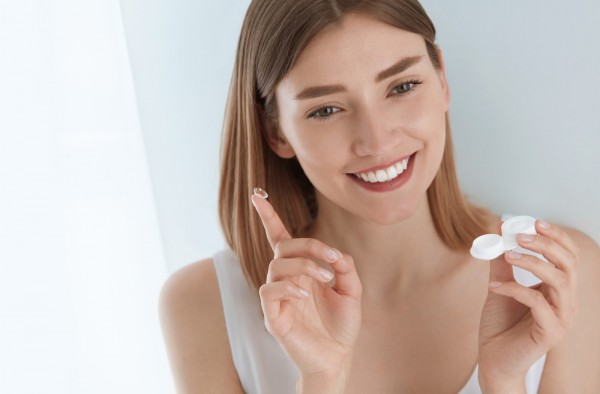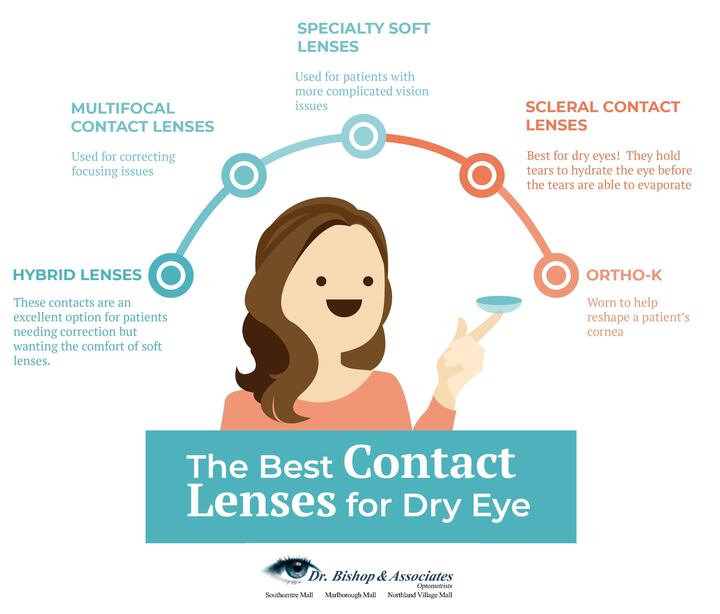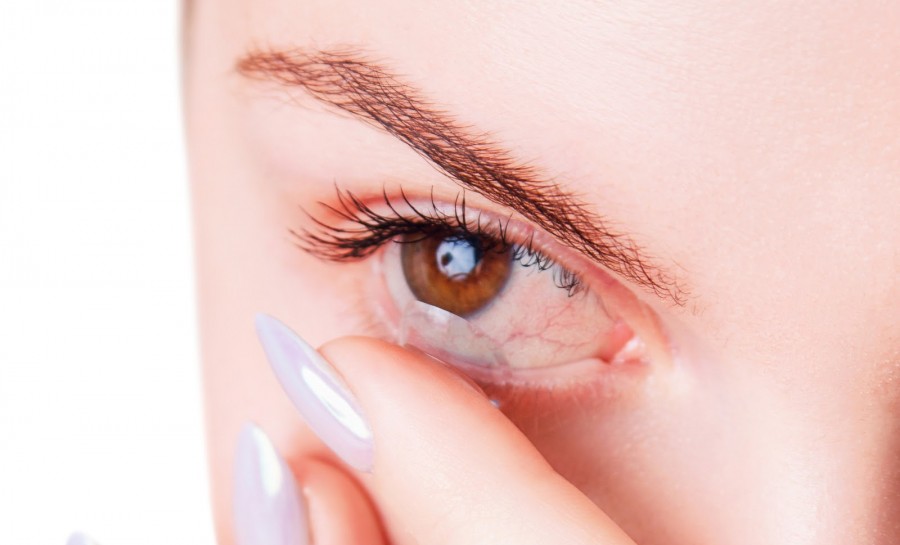No one should have to deal with dry eyes when wearing their contact lenses every day or even just once in a while. Contacts should fit your eyes correctly and feel nonexistent throughout your day.
Wearing contact lenses and having dry eye disease should be far from synonymous, but they are often put together because the wrong contacts are selected. Selecting the right type of contact lenses can help you feel good about wearing contacts again!
If you are currently wearing contacts or looking to get a new pair, keep reading to learn what type of contact lens is best for you and your eyes.
What is Dry Eye Disease?
Dealing with the uncomfortable symptoms of dry eyes is annoying when going about your day. Caused by many different factors, including your diet, contacts, or even dry weather (especially here in Alberta). Dry eye disease can mean that your eyes are no longer able to produce enough lipids to keep your tears trapped on the surface of your eyes and to keep your eyes moist.
Having this lack of lipid production is from meibomian gland dysfunction (MGD), resulting in your eyes becoming dry and irritated. This condition is chronic, there are both short and long-term solutions to bring relief back to your eyes.
Due to the weather and climate in Alberta, Albertans are more prone to developing dry eye disease. Across Canada, dry eye disease affects 30% of Canadians. If you live in a dry environment or are at risk of developing dry eye disease, book an appointment for a consultation. Even if you are not at risk of dry eye disease or have problems with your vision, it is important to visit your optometrist for regular yearly eye exams.

Different Types of Contacts
Not only is the prescription of your contact lenses specific to you, but the shape and sizes of the lenses are as well. The different types of contact lenses below will fit everyone’s eyes differently, as well as solve different problems with their eyes.
If you are currently wearing contacts and suffering from dry eye disease, there is a high chance you are wearing the wrong type of contacts and can be easily assessed by an optometrist.
Ortho-K
Orthokeratology (or ortho-k,) contacts are worn to help reshape a patient’s cornea. These contacts are worn only during the night, helping to correct a patient’s vision by reshaping your eye.
Ortho-K contact lenses can also help to control myopic progression or near-sightedness in children.
Scleral Contact Lenses
Best for dry eyes!
Covering the cornea and a portion of the sclera (the white part of the eye), scleral contact lenses don’t lay directly against the cornea. Instead, they rest on the edges of the sclera, being useful when dealing with cornea conditions (they can even fit severely damaged corneas!).
These contacts are excellent for people with dry eyes as they hold tears to hydrate the eye before the tears are able to evaporate. Since these contact lenses are made to order and specific to each patient, they are a great option for contact lens wearers who have had a hard time finding the right lenses in the past.
Specialty Soft Lenses
Used for patients with more complicated vision issues, specialty soft lenses are a great alternative to more rigid gas-permeable lenses. These lenses are an excellent choice for anyone with a higher prescription.
Hybrid Lenses
Hybrid lenses are a mix between gas-permeable lenses and soft lenses. While still rigid around the centre (helping to correct vision), they have a soft outer layer to provide comfort. These contacts are an excellent option for patients needing correction but wanting the comfort of soft lenses.
Multifocal Contact Lenses
Used for correcting focusing issues, multifocal lenses combine multiple corrective powers and prescriptions within a single lens to help you see from different distances.
Selecting the Right Contacts

Before making the switch to scleral contact lenses, a few steps need to be taken. First, check with your optometrist to see what type of contact lenses you currently have. Finding out what lenses you have and why you have them is an important place to start.
After you have discovered what type of lenses you are wearing, explain to your optometrist that you are dealing with dry eye disease. These issues are likely to become apparent during a regular yearly eye exam.
In most cases, you can select scleral contact lenses to correct your vision and help with your dry eye disease, bringing relief to your eyes. However, if you are unable to switch or select scleral contact lenses, there are other effective treatments to help with your dry eye disease.
Stopping Dry Eye While Wearing Contacts
If you are suffering from dry eye disease, it is first recommended that you book an appointment with your optometrist for a consultation. After the consultation, your optometrist will provide you with different solutions.
Our Recommended Treatment Options
- Artificial tears or ointments
- Medicated eye drops
- Oral medication
- Lid hygiene techniques
- Nutritional supplements or modification
- BlephEx
- Manual expressions
- Punctal plugs
- Intense pulsed light therapy
- Lipiflow
- Eye Light
While waiting for your appointment with your optometrist, try either giving your eyes a break from your contacts by wearing glasses or keeping your eyes moist with eye drops.
Don’t settle for dry and irritated eyes because of your contacts, visit your optometrist to find the best contacts for you!



